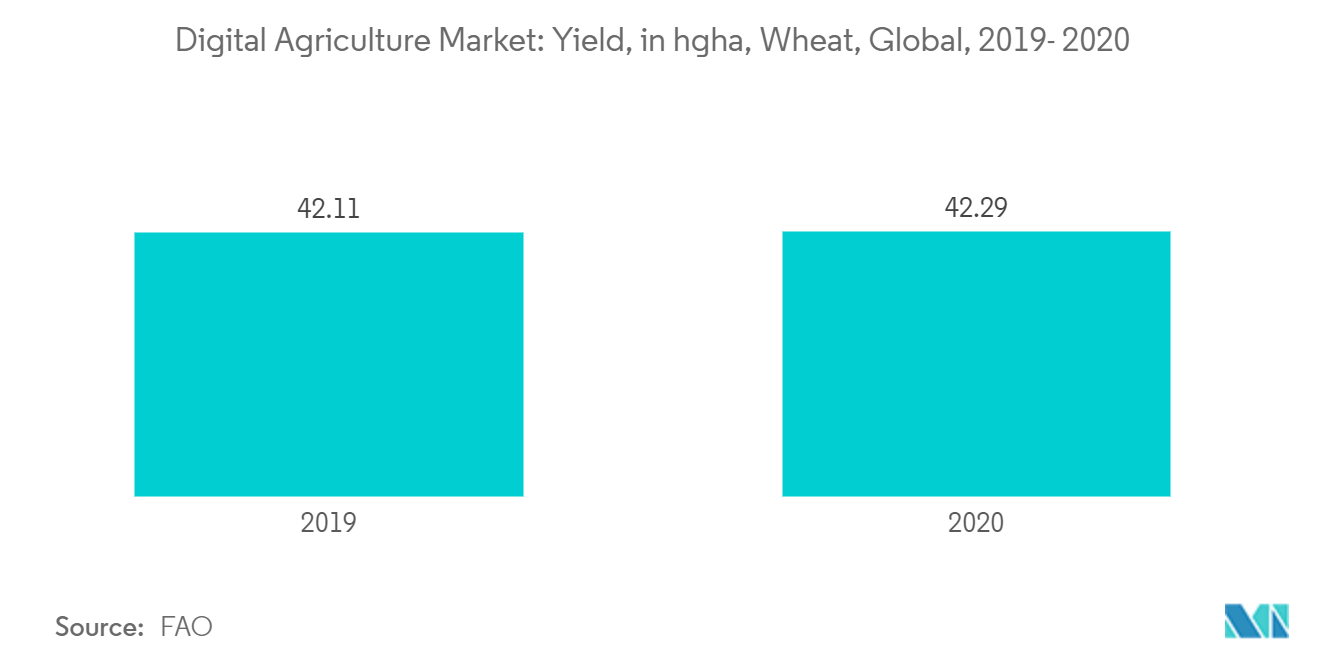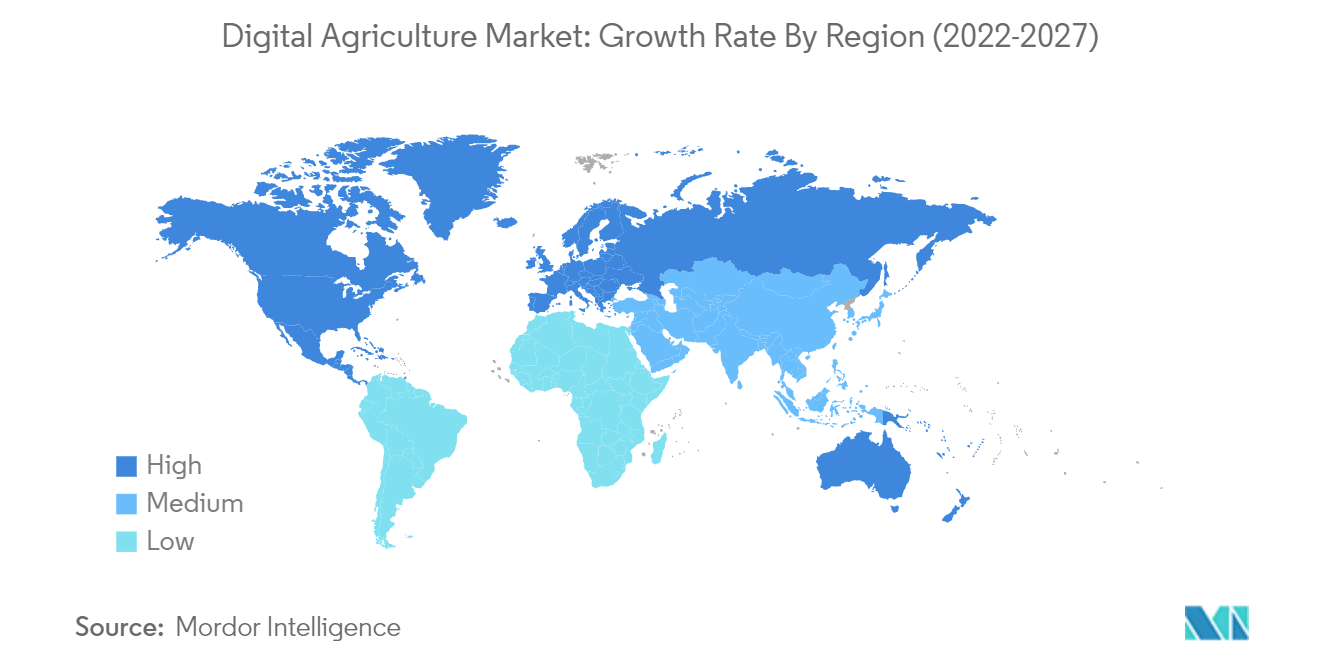Market Trends of Digital Agriculture Industry
This section covers the major market trends shaping the Digital Agriculture Market according to our research experts:
Increasing Pressure for Higher Productivity and Improved Crop Health
There is constant pressure on the farmers to produce more food and animal feed with lesser amounts of chemicals. At the same time, it is essential to use less energy and labor while improving the management of environmental land and water. With the population growing rapidly, it is becoming very difficult to feed the increasing population, thereby creating high pressure to increase agricultural productivity. The use of software such as precision farming, along with the Internet of Things (IoT) tools, is a solution to all these requirements.
According to the FAO data, the yield for major cereal crops like rice, wheat, barley, corn, and other grains reduced considerably from 41,079 hg/ha in 2019 to 40,708 hg/ha in 2020 for wheat; a similar reduced trend for barley and other coarse grains was observed. Precision farming helps farmers know the seeds that have to be planted, the number of fertilizers that need to be applied, the best time to harvest the crops, and the expected output.
The adoption of technology in Europe and North America has increased crop productivity. For instance, in June 2022, Idele (Institut d'Elevage), France, developed a data-based online application called CAP'2ER, with thirty sets of activity data entered into the program to determine agro-ecological indicators. This application analyzes five sets of databases, such as livestock, manure management, fields, feed, and energy consumption, by analyzing total annual fuel consumption, animal productivity (fertility, growth, and marketing age), feed purchased, manure quantities and management, number of trees and thickets, shrubs, hedges, grass strips, stone piles and stone walls, and water bodies on the farm.
The Brazilian Precision Agriculture Research Network (Embrapa), established by Brazil Agricultural Research Corporation, has generated various tools for soybean, maize, wheat, rice, cotton, pasture, eucalyptus, pines, and other crops. The use of precision agriculture in Brazil has led to improvements in crop yields as well as environmental protection. For instance, in June 2022, a study was conducted by Embrapa instrumentation, São Carlos, in the winery Terras Altas (Ribeirão Preto, SP), in partnership with the São Paulo State University, to produce distinguished wines by precision farming by double pruning systems and other management practices.
Thus, the use of precision farming software, such as MapShots, AgDNA, AgroSense, and others, will help increase crop productivity, thereby improving soil health and driving the demand for digital agriculture in other regions of the world.

Asia-Pacific is the Fastest-growing Market
The Chinese agricultural sector has undergone a groundbreaking revolution with respect to the adoption of smart farming practices in recent years. Although the advent of sensor-based technologies, such as Internet of Things (IoT) cellular devices, gear tooth sensor-based irrigation and fertilization equipment, and valve position sensors, among others, is relatively new in the domain, the country has been witnessing a new-found demand for sensors, primarily due to the increased rate of mechanization and smart agricultural practices adopted by the farmers.
China's contribution rate to its agricultural science and technology progress indicates the country's revitalization strategy in terms of agricultural modernization. In 2020, the Chinese central government launched a pilot project named ''digital village', promoting the use of information technology to stimulate domestic consumption, leading to a boom in the mobile internet-driven economy.
Similarly, the rising demand for digitization in Indian agriculture is well acknowledged, with efforts being made toward digitizing the prevailing value chain. In September 2021, the Union Minister of Agriculture & Farmers Welfare launched the initiation of the Digital Agriculture Mission 2021-2025 while signing five memoranda of understanding (MoUs) with CISCO, Ninjacart, Jio Platforms Limited, ITC Limited, and NCDEX e-Markets Limited (NeML), to forward digital agriculture through pilot projects. The Digital Agriculture Mission 2021-2025 aims to support and accelerate projects based on new technologies, like AI, blockchain, remote sensing, and GIS technology and the use of drones and robots.
In February 2020, the Jio Agri (JioKrishi) platform was launched by Reliance Group of Company to digitize the agricultural ecosystem along the entire value chain to empower farmers. The core function of the platform uses stand-alone application data to provide advisory services. The advanced functions use data from various sources, feed the data into artificial intelligence (AI)/machine learning (ML) algorithms, and provide accurate, personalized advice. The pilot project for this initiative will take place at Jalna and Nashik (Maharashtra). Thus, the rise in technology-driven agricultural equipment availability and an increase in government funding for the establishment of tech firms are driving the digital agriculture market in the Asia-Pacific region.

